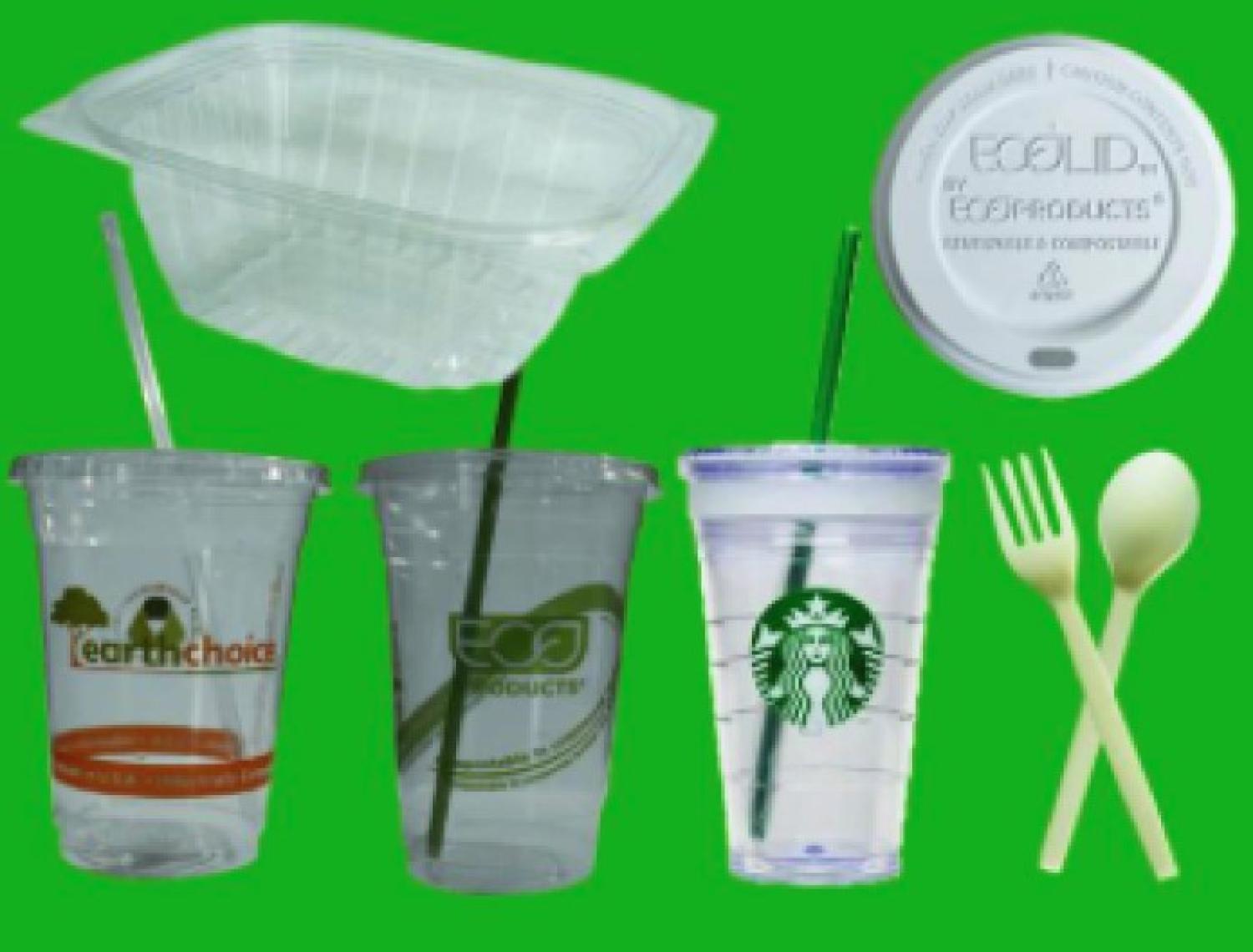Bioplastics: are they as good as they seem?

While bioplastics have been advertised as being the savior of the world’s plastic pollution issues, bioplastics too, have some issues of their own. Bioplastics are made, at least partially, of plants. This means that land must be used to grow the plants that are used. They are also frequently made of plants such as corn, which are often grown as a monocrop, which is not as beneficial for the environment as growth with more diversity. Bioplastics also must be disposed of with proper techniques. If proper disposal techniques are not followed, bioplastics have problematic implications for both recycling and landfills. This article will outline the basics of bioplastics and everything you need to know in order to avoid improper disposal.
Biodegradable plastics
- Bioplastics are made of at least 20% renewable resources, rather than petroleum based plastics.
- There are two types, although the most common type is PLA, which you will generally be able to read on the plastic. If it is PLA, it will have a 7 inside of the recycling symbol and say PLA beneath the symbol.
Backyard compost vs. industrial compost
- Backyard composts generally can consist of kitchen scraps and yard scraps
- Industrial composts consist of a wider variety of materials
- Industrial composts can process dairy, meat and some paper products that might not be able to break down fast enough in a backyard compost. They also can take biodegradable plastics, labeled PLA 7.
- For more information on the technical process involved in industrial composting check out this article.
Disposal of bioplastics
- Most bioplastics require an industrial composting facility in order to actually break down quickly and safely.
- These plastics, which generally have some phrase similar to “industrially compostable,” are only compostable in industrial composting facilities. If these plastics are not disposed of properly, they are not a whole lot better than normal plastics.
- If left in a backyard compost, they will likely take at least a decade to break down.
- Although there are many cities in the United States that use bioplastics as a replacement for traditional plastics for to-go food orders and other things of that nature, very few cities actually have commercial composting facilities.
- If bioplastics are disposed of in landfills, because they are not decomposing in the proper manner, they are more likely to produce methane, which is a greenhouse gas that is far more potent than carbon dioxide.
- It is also problematic for bioplastics to end up in recycling facilities. Compostable plastics are contaminants in recycling. If too much of a contaminant is present in the sorted batch of recycling, it can make the entire batch of recycling not viable, causing issues with proper recycling and ultimately leading to more waste in landfills.
Bioplastics vs. petroleum plastics
- While the production of bioplastics produces fewer greenhouse gases, a study from the University of Pittsburgh found that they actually produce greater amounts of pollution as a result of pesticides, fertilizers and land use.
- Petroleum plastics are made from fossil fuels such as natural gas and crude oil
- Bioplastics are made of plants such as corn and other grains.
- For more information on the climate impacts of petroleum single-use plastics, check out this article.
What can you do?
- Avoid all disposable plastics if possible by using reusable water bottles, reusable utensils, avoiding take out food and shopping at bulk stores to name a few.
- Make sure to dispose of your materials in the proper way (compostable plastics in a commercial composting facility, not in the landfill or recycling).
- If your city does not have a commercial composting program, contact your local government to see what you can do to ensure a commercial composting program may be implemented in your community.
- Check out this website for more information on how to limit your plastic waste and waste in general.
- Sign up for EcoBuffs and get a Free EcoKit that includes reusable utensils/straw and a reusable bag so you can reuse instead of dispose!
Categories: sustainable perspectives


